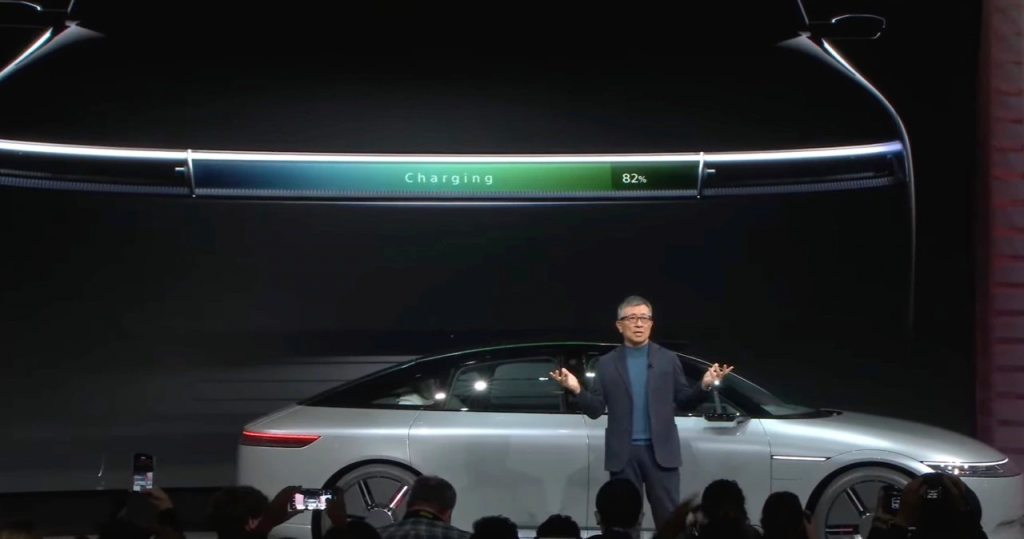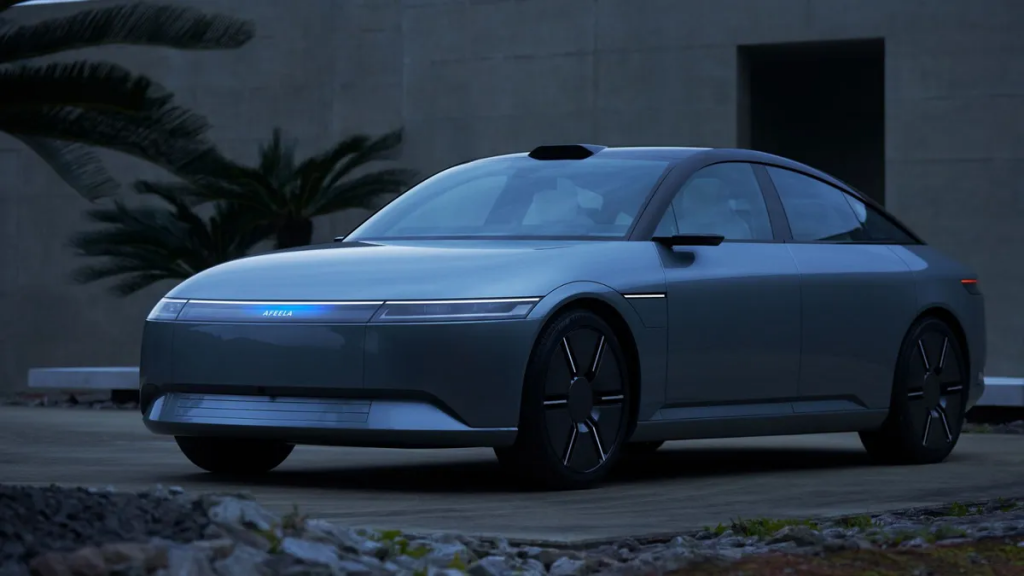A year after Sony and Honda announced plans to manufacture and market electric automobiles jointly, the two firms unveiled an Afeela prototype.
The four-door car was driven onstage at CES on Wednesday while Sony CEO Kenichiro Yoshida discussed the company’s mobility strategy, which prioritizes producing vehicles with autonomous capabilities that can be turned into “moving entertainment space.”
According to Yoshida, the Afeela will be available for presale in the first half of 2025, with sales beginning the following year. The first shipments will be sent to North American consumers in the spring of 2026.

Sony and Honda have previously said that the new EV would be constructed initially at Honda’s North America facility and will have Level 3 automated driving capabilities under limited conditions. Level 3 autonomy indicates that the automobile may drive in conditions such as traffic jams, but the human driver must take control when the system asks.
In addition, Sony disclosed further details about the vehicle’s design, including the incorporation of external media along the front of the vehicle, allowing it to communicate with other road users and transmit required information.

“We plan on exploring the possibility of how media can create a fun and exciting mobility interaction,” said Yoshida.
According to Yoshida, the prototype is also outfitted with 45 cameras and sensors both inside and outside the car to assure safety and security. To avoid accidents, the in-cabin sensors will monitor the driver’s state.
According to Yoshida, Afeela will also provide clients with best-in-class entertainment. The Sony-Honda joint venture will include Epic Games’ Unreal Engine, a 3D computer graphics game engine, inside their vehicles to aid in visualizing entertainment, communication, and safety.
“In addition to movies, games, and music, we envision a new in-cabin experience using our expertise of UX and UI technologies,” said Yoshida.

According to Epic Games’ chief technical officer, Kim Libreri, the most organic way to show crucial data within the automobile is through intuitive interactive photo real augmentation, which Unreal Engine excels at.
“In the future, the automobile will become a next-generation destination for social connectivity. Not only for the occupants but also for their network of friends and colleagues. It will become a continuum of our digital lives,” said Libreri onstage at CES.
Afeela cars will be built around Qualcomm’s system-on-a-chip technology, including their Snapdragon digital chassis, to handle all of the computing required for automated driving and advanced driver assistance system capabilities, car telematics, and what we expect to be a tricked-out infotainment system.


